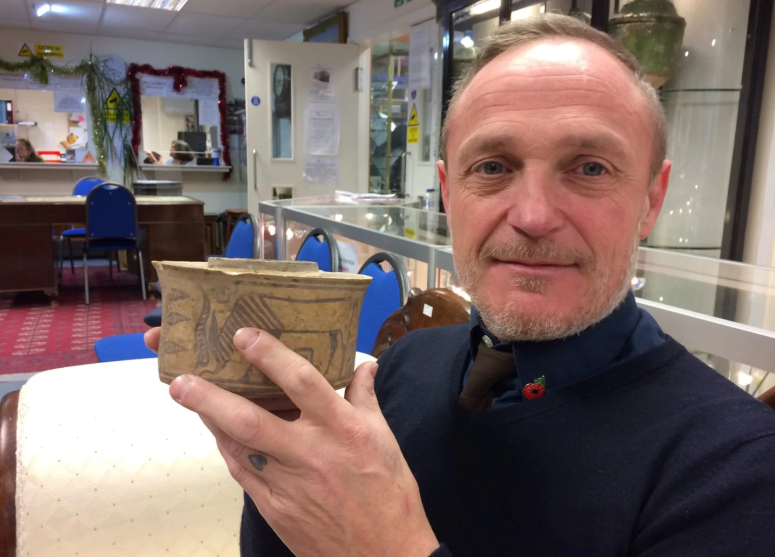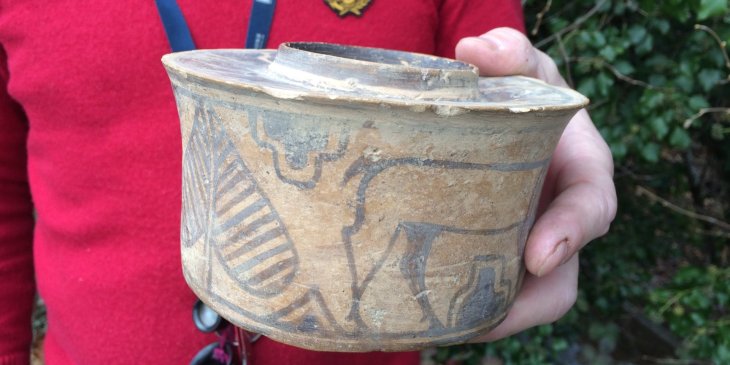A Toothbrush Jar Turns Out A 4000-Year-Old Indus Valley Pot. Who Can Think It’s Real?
Jyotis - Dec 11, 2018

The toothbrush jar, in fact, was an ancient artifact that showed evidence of Indus Valley Civilization.
Who can think a ‘toothbrush jar’ bought for £4 (about Rs 364) at a car boot sale is a 4000-year-old Indus Valley pot? That’s exactly what Karl Martin from Derbyshire, England did in 5 years.
His intention to buy this pot is to look for something to put his toothbrush in, and he must be shocked when realizing the truth around it. The toothbrush jar, in fact, was an ancient artifact that showed evidence of Indus Valley Civilization. That means it was about 4000 years old. It had decorative patterns of antelope on its body.
Those who participate in or hear about Antiques Roadshow know that there is almost no chance to pick up anything attractive or valuable at a car boot sale. And Martin is not clearly an exception. What made this story funnier was his current job – he is working for Hansons Auctioneers and obviously knows something regarding ancient artifacts.
When being interviewed, Mark revealed that he had suspected the age of his jar, but it’s not enough for him to remember about it. Everything came into the light when he helped James Brenchley to unpack a van and saw some pottery with the same kind of patterns as his toothbrush jar. James Brenchley is an antiquities expert in Hansons Auctioneers.
After that, Brenchley appraised this jar and confirmed it was originated from Indus Valley Civilization at 1900 BCE. The place of its production has been changed into Afghanistan now.
There were three first early civilizations in the Bronze Age, including Egypt, Indus Valley, and Mesopotamia and until now, some of relics in these periods have still been kept as precious research resources of archaeologists and historians. That’s also why Brenchley could determine the origin of this pot.
According to his guess, the Indus Valley pot had been owned by wealthy travelers and moved to England some years ago. However, it’s still a guess. Nobody knows what’s going on in reality to this pot.
At the end of November, Martin decided to sell it at an auction held by Hansons Auctioneers. He got £80 (about Rs 7,283), 20 times more than the price he paid to own this relic.
Featured Stories

Features - Jul 01, 2025
What Are The Fastest Passenger Vehicles Ever Created?

Features - Jun 25, 2025
Japan Hydrogen Breakthrough: Scientists Crack the Clean Energy Code with...

ICT News - Jun 25, 2025
AI Intimidation Tactics: CEOs Turn Flawed Technology Into Employee Fear Machine

Review - Jun 25, 2025
Windows 11 Problems: Is Microsoft's "Best" OS Actually Getting Worse?

Features - Jun 22, 2025
Telegram Founder Pavel Durov Plans to Split $14 Billion Fortune Among 106 Children

ICT News - Jun 22, 2025
Neuralink Telepathy Chip Enables Quadriplegic Rob Greiner to Control Games with...

Features - Jun 21, 2025
This Over $100 Bottle Has Nothing But Fresh Air Inside

Features - Jun 18, 2025
Best Mobile VPN Apps for Gaming 2025: Complete Guide

Features - Jun 18, 2025
A Math Formula Tells Us How Long Everything Will Live

Features - Jun 16, 2025



Comments
Sort by Newest | Popular